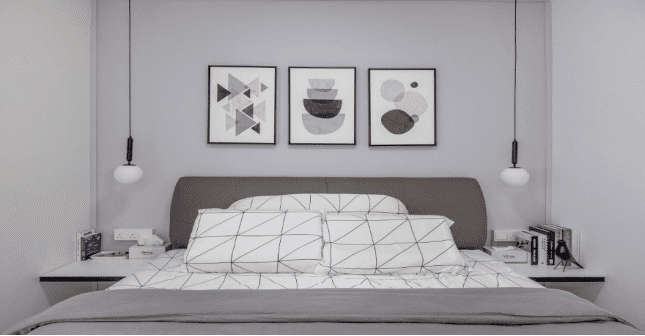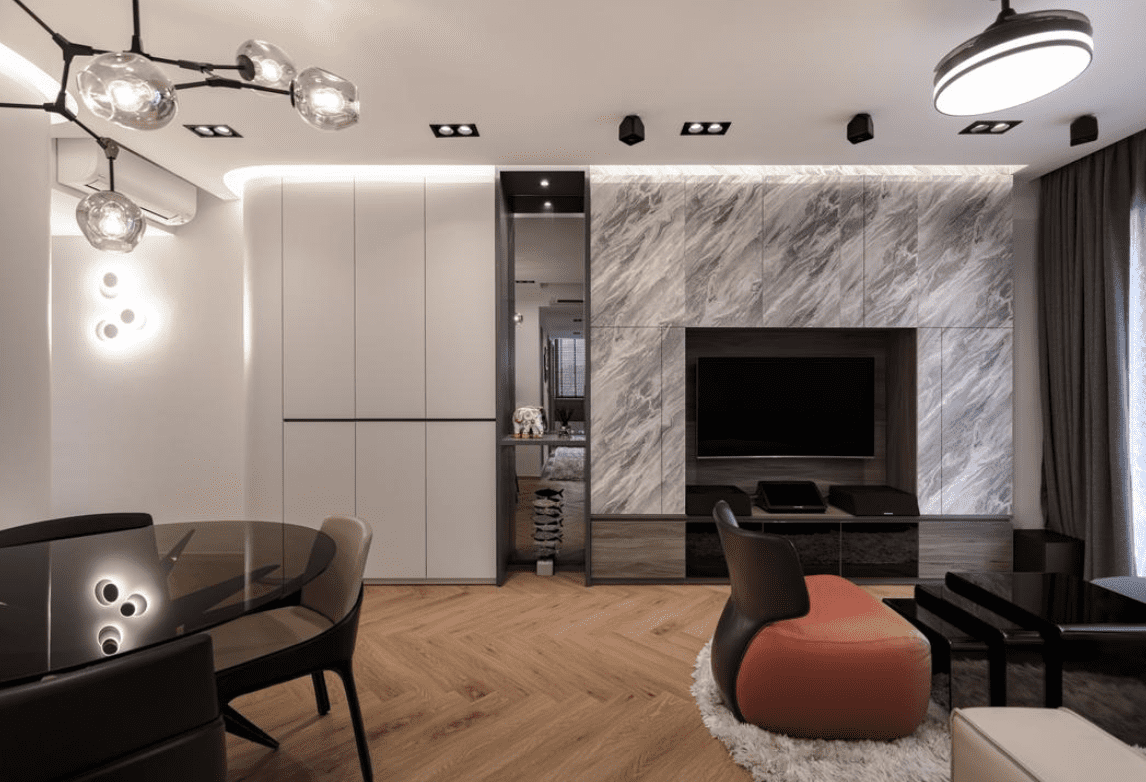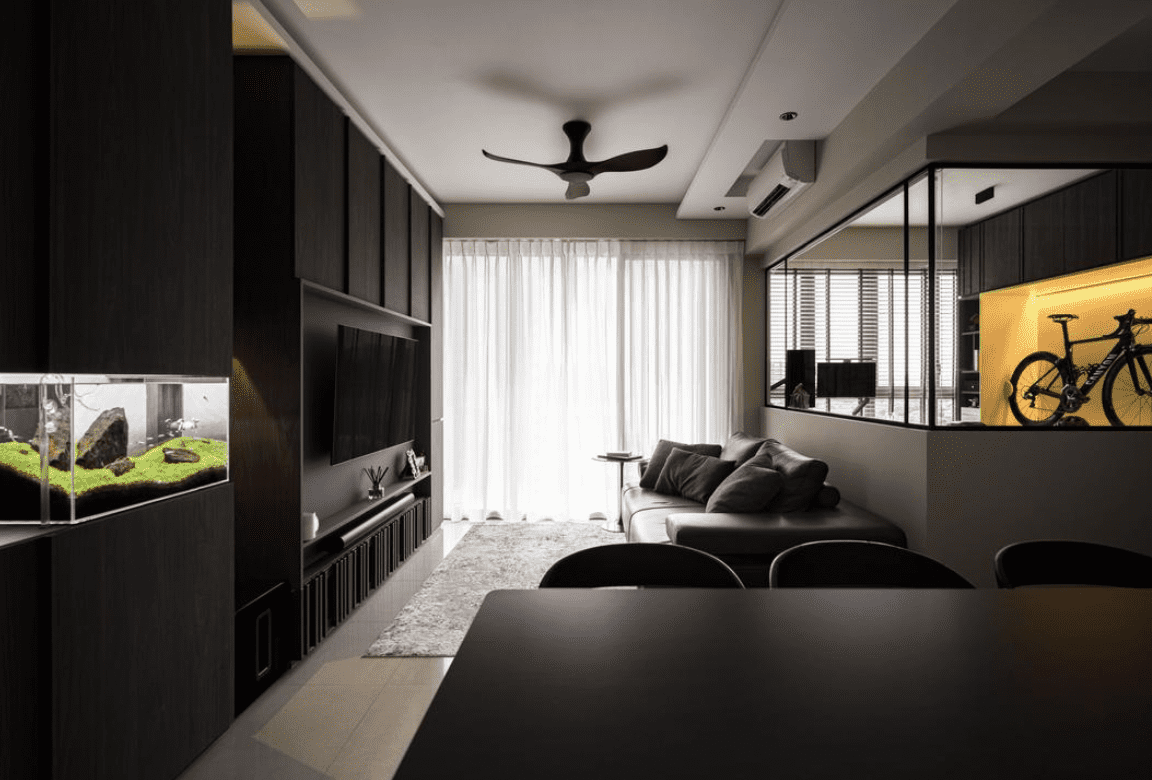Renovating your space is not a daunting task. It is actually easy and enjoyable especially if you know the basics. Wall and ceiling finishes, material for the counter top, color hue of furniture to match the rest of your home, curtains and blinds– these are all important things to take note of in interior design. But there is one important thing that has not been mentioned yet but is actually a commodity in home improvement – lighting.
To understand more about lighting, let’s discuss its five types and see how we can use it to our advantage and come up with the best possible look for your home.
Natural Light
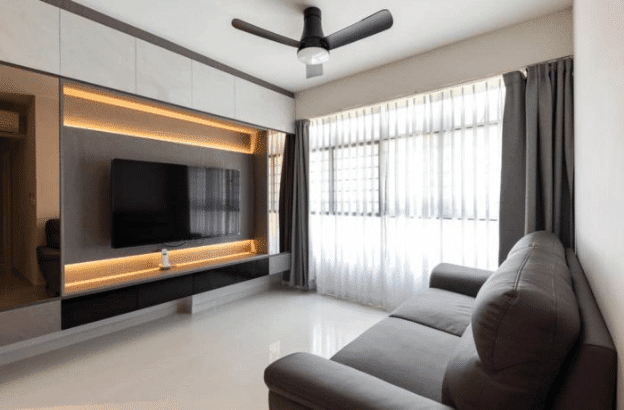 Image Credit: Renopedia, Swiss Interior
Image Credit: Renopedia, Swiss Interior
Let’s start it off with the most basic type of light – natural light. Did you know that natural light affects one’s perception of a space? In reality, scientific studies have proven that natural lighting can actually make an area more spacious than artificial lighting can. When it comes to health benefits, natural lighting has also proven to help our bodies produce Vitamin D, improve our sleep patterns, and help us focus on tasks thus enables us to get more things done. More importantly, natural lighting helps in making us happy, as supported by scientific data.
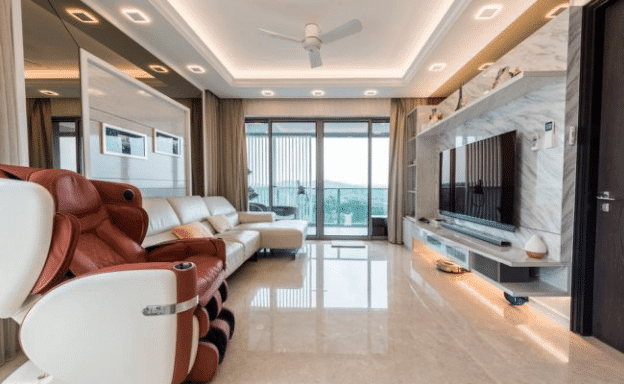
Image Credit: Renopedia, Stylerider
Unfortunately, with the pandemic still beneath us, many people still prefer to stay indoors 80-90% of the time. If you’re one of these people, at least let natural light penetrate your home.
Now that we understand the importance of natural lighting to our homes, it’s time to know how to take advantage of natural light.
Of course it depends if you’re building a new home or you’re simply remodeling. If you have the chance, always make sure to design a few window openings in your home, all of which in strategic location. However, if you’re just doing fit outs or you are just remodeling, the only choice you have is to maximize the natural light you can get. Here are some tips to add natural lighting in your home.
- Consider reflective flooring
- Replace wall claddings or brick surfaces with glass
- Enlarge your windows, if possible
- Raise your ceilings, also if possible
- Free up your windows of obstructions
- Take advantage of skylights, if necessary
- Add mirrors opposite to your windows
Ambient Light
The next type of light is ambient lighting. To put it short, ambient lighting is basically the principal source of light in a particular space. It is the substitute to natural lighting when the aforementioned is not present. This is why it is also often referred to as general lighting.
Ambient lighting is expected to be well thought of as it should not create any glare therefore not distracting, and it also should not be too bright or too dark that it may tire out your eyes. More commonly, ambient lighting is created through ceiling mounted fixtures.
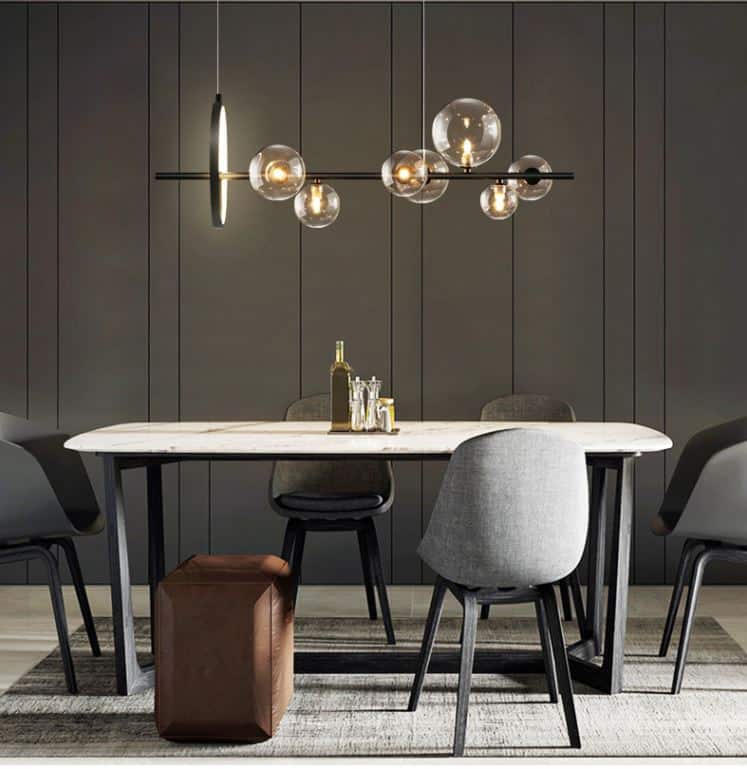 See this look: Elomkona Molecular Circus Hoop Pendant Lamp
See this look: Elomkona Molecular Circus Hoop Pendant Lamp
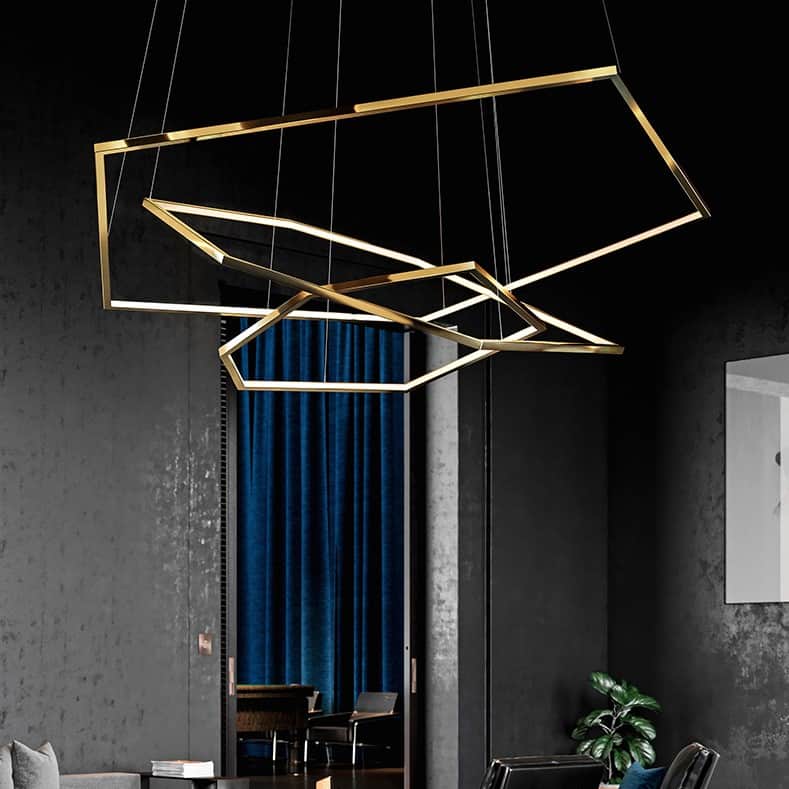 Check this out :Laguuse Polygonal Large Rings Pendant Lamp
Check this out :Laguuse Polygonal Large Rings Pendant Lamp
Due to its high placement, chandeliers or hanging lamps are great source of ambient lighting. These fixtures diffuses light evenly throughout the room making sure most, if not all corners are well-lit.
Other lighting fixtures that can provide ambient lighting include recessed lights, track lights, and wall lamps.
For hallways and stairs, wall lamps are excellent source of ambient lighting.
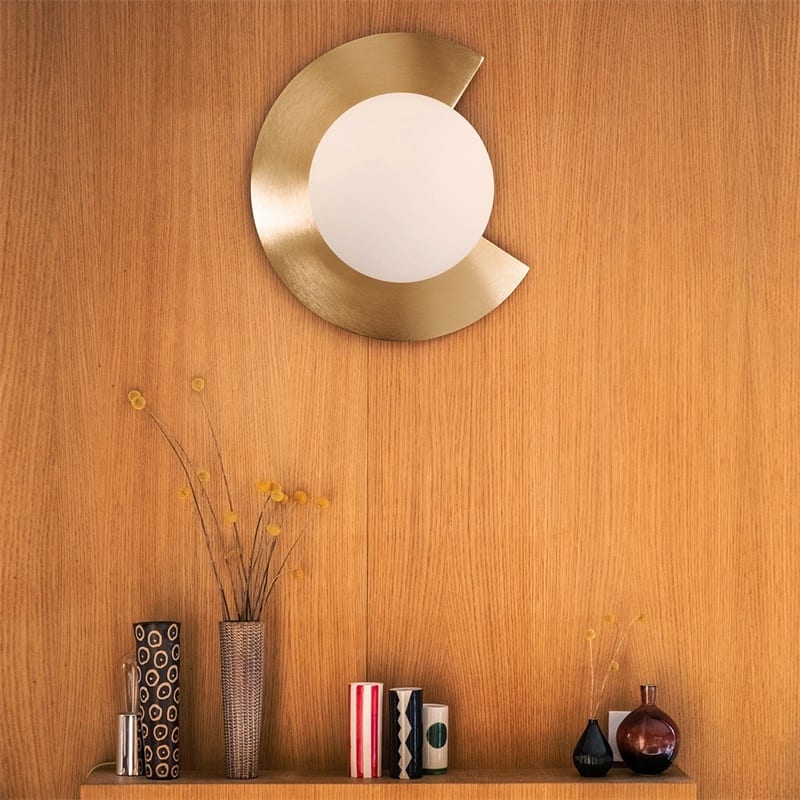 Shop this here: Glensooka Chipped Record Brass Wall Lamp
Shop this here: Glensooka Chipped Record Brass Wall Lamp
For kitchens, recessed lighting and basic ceiling mounted fixtures are commonly used as primary source of light.
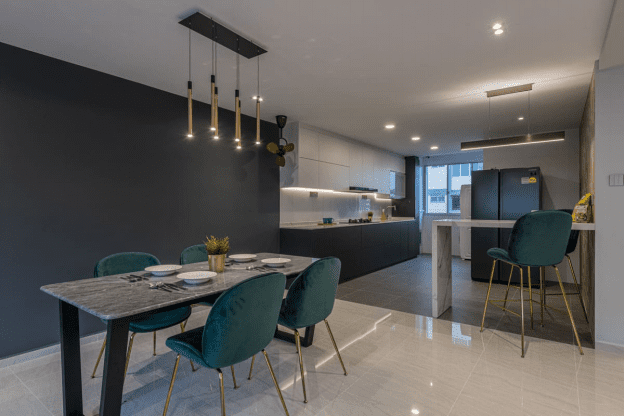 Image Credit: Renopedia, Letz Interior
Image Credit: Renopedia, Letz Interior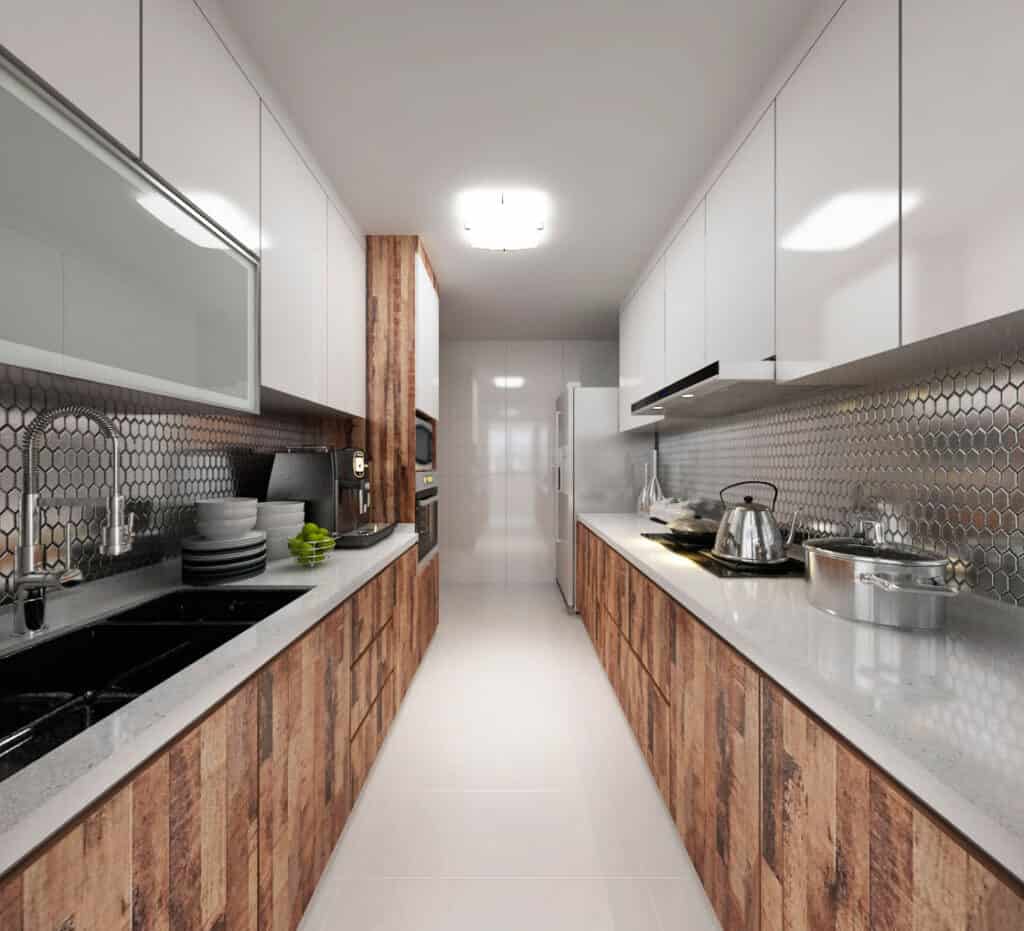 Image Credit: Renonation, 9 Creation
Image Credit: Renonation, 9 Creation
Track lights on the other hand are very flexible in such a way that it can also be used in the kitchen, hallways, offices, etc.
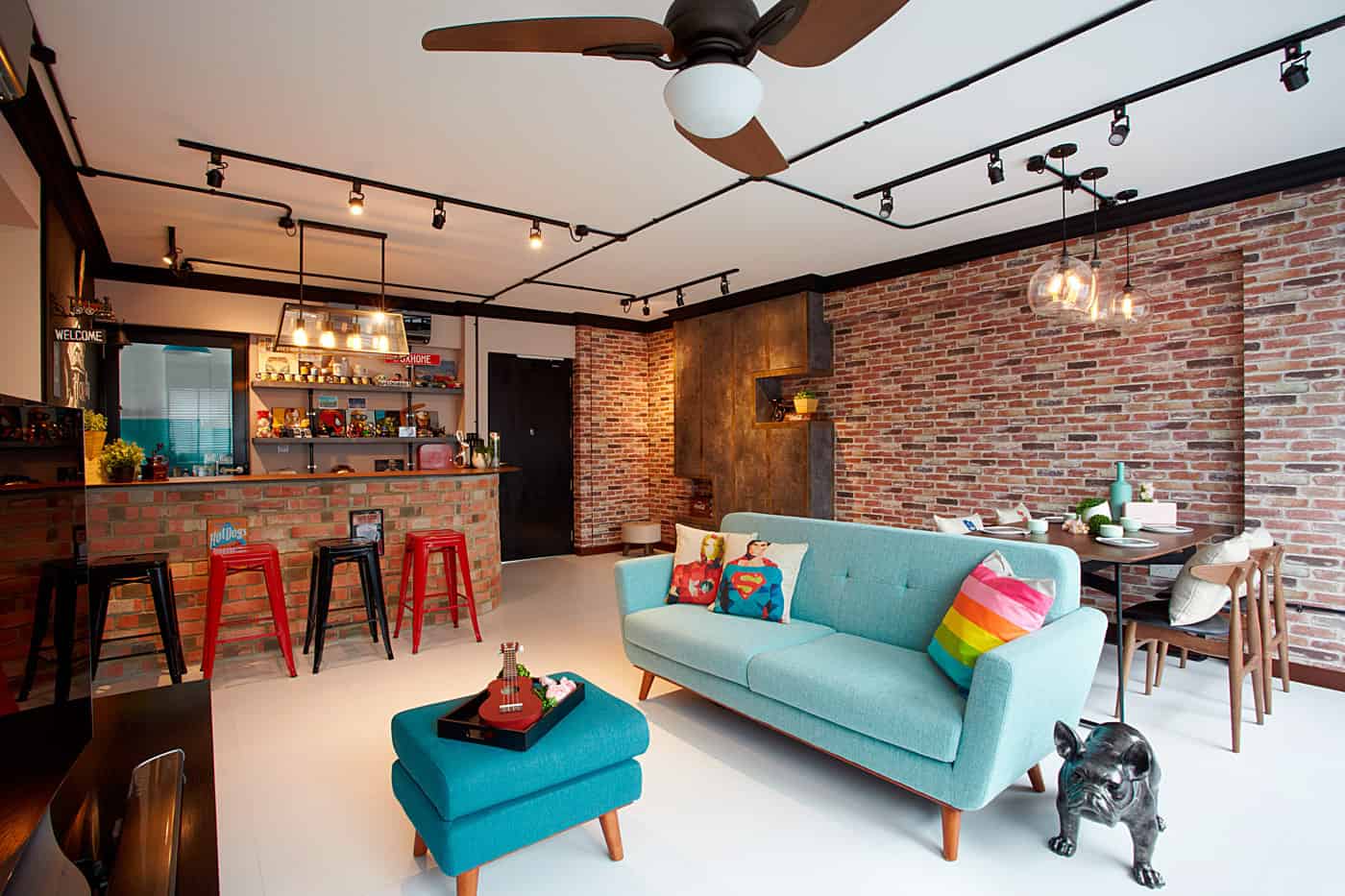 Image Credit: Renonation, I-Bridge Design
Image Credit: Renonation, I-Bridge Design
As previously mentioned, ambient lighting is expected to be well thought so any lighting fixture can actually be the primary source of light if it is well-designed and well-planned.
Task Light
This next type of light as some may say is not necessary but definitely life changing. Task lights complement ambient lights as it provides increase lighting for particular tasks done in specific rooms. It is extremely helpful in seeing smaller objects with low contrast or activities in need of greater accuracy. This includes food preparation, cooking, studying, doing homework, doing office reports, drafting, sewing, skincare, and many more.
With so many activities at home requiring more illumination, it is without a doubt that task lighting is important and should be considered if you’re planning your lighting.
Various lighting fixtures can be used as task lighting. For the kitchen, more commonly used are track lights or under cabinet lights. Task lights in particular provides more focused illumination. It having multiple heads is also a factor as you may focus light on different areas.
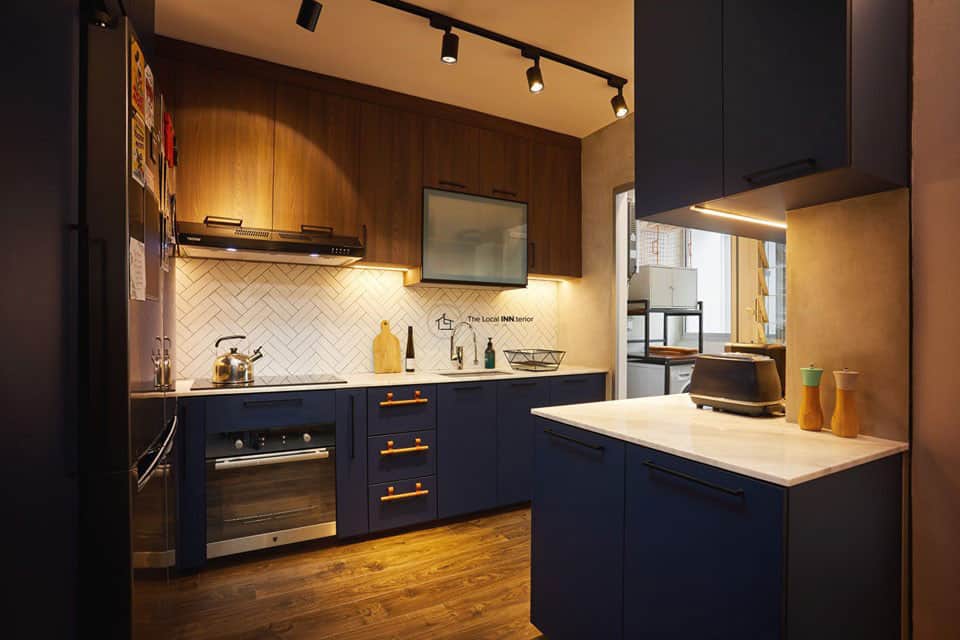 Image Credit: Renonation, The Local Inn.Terior
Image Credit: Renonation, The Local Inn.Terior
You may also use wall lamps placed directly above the sink or the preparation counter. There are many wall lamps that can be rotated and it is more advisable to use these.
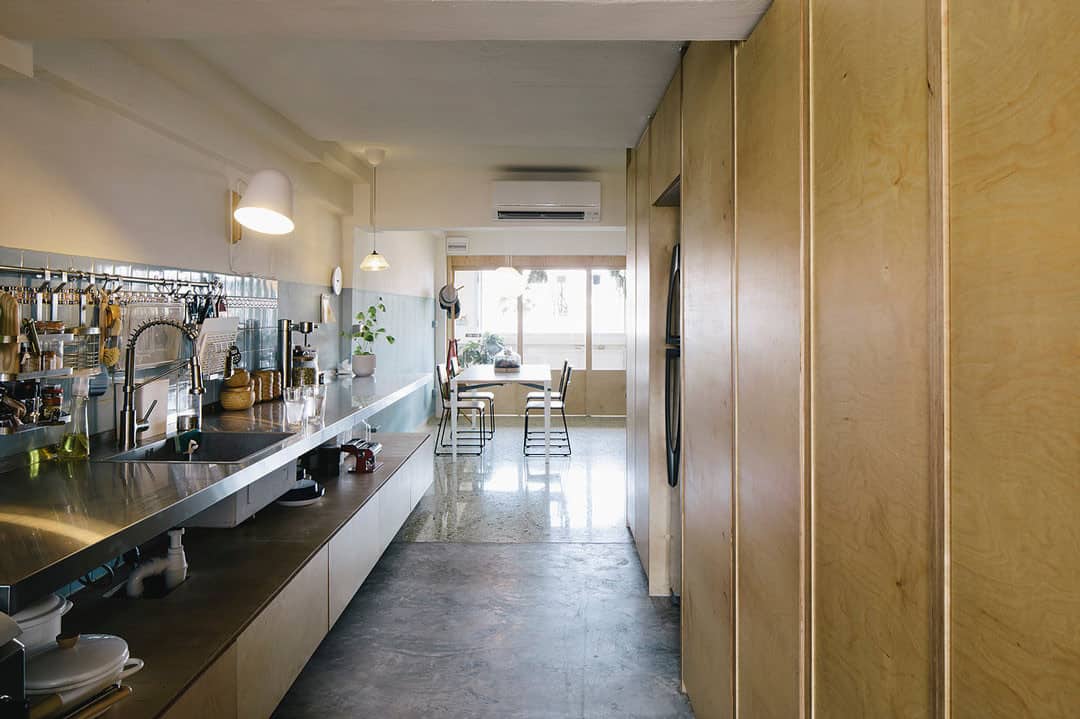 Image Credit: Renonation, The Monocot Studio
Image Credit: Renonation, The Monocot Studio
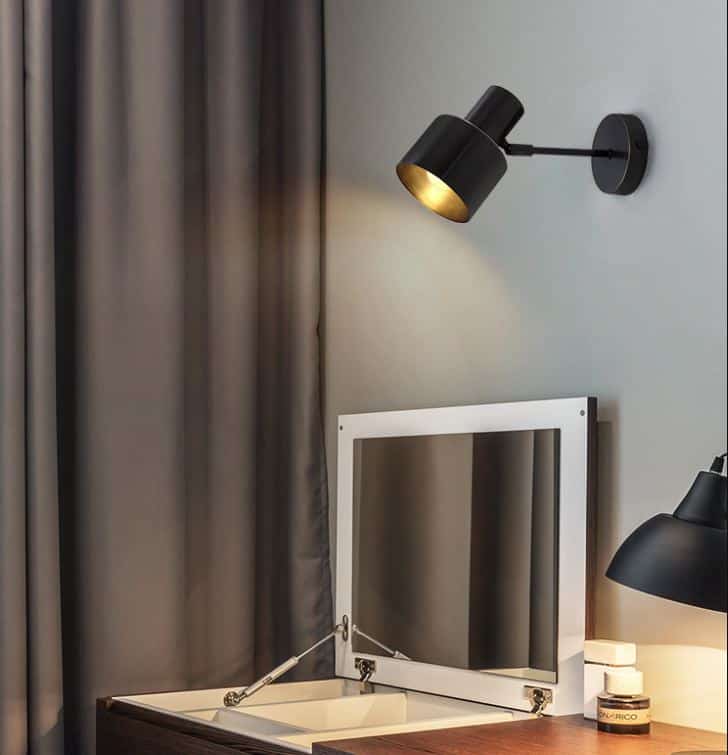 Get this here: Huldana Brass Wall Lamp
Get this here: Huldana Brass Wall Lamp
In the bedroom, used for a long time are bedside lamps or floor lamps. These of course are still available in the market and definitely can still do its job. However, we recommend pendant lights and wall lamps instead as these do not take up too much space. Having floor lamps beside your bed will mean that you cannot have a bedside table anymore. If you do have nightstands or bedside tables, you may then hung wall lamps about 30-36 inches above the mattress. With this, you can still place other items on top of the table instead of a desk lamp taking up too much space.
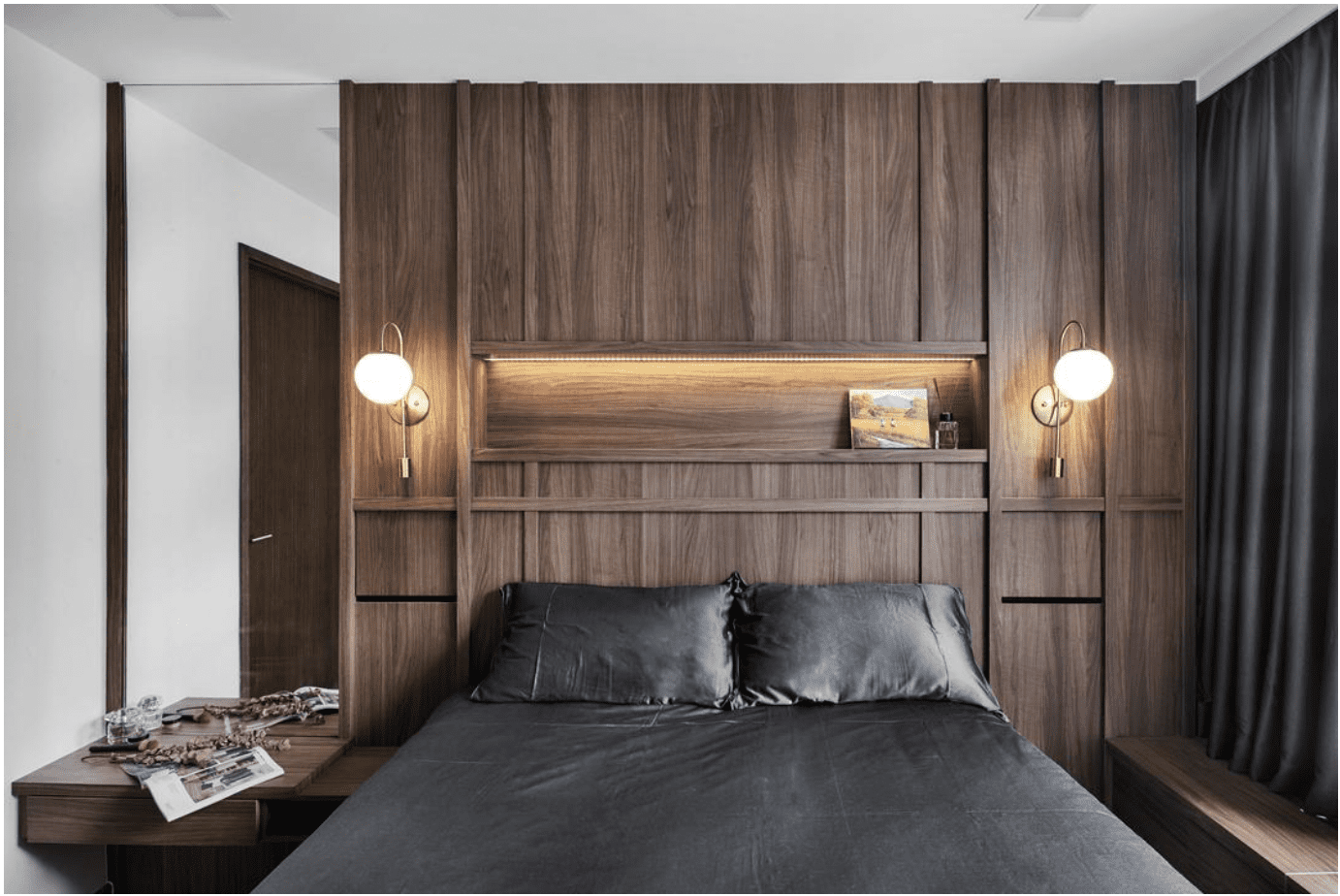 Image Credit: Qanvast, Couple Abode
Image Credit: Qanvast, Couple Abode
It has also been a trend to use pendant lights on bedsides. You may also get this idea and add luxurious feels to your bedroom.
Image Credit: Starry Homestead Ptd, Renopedia
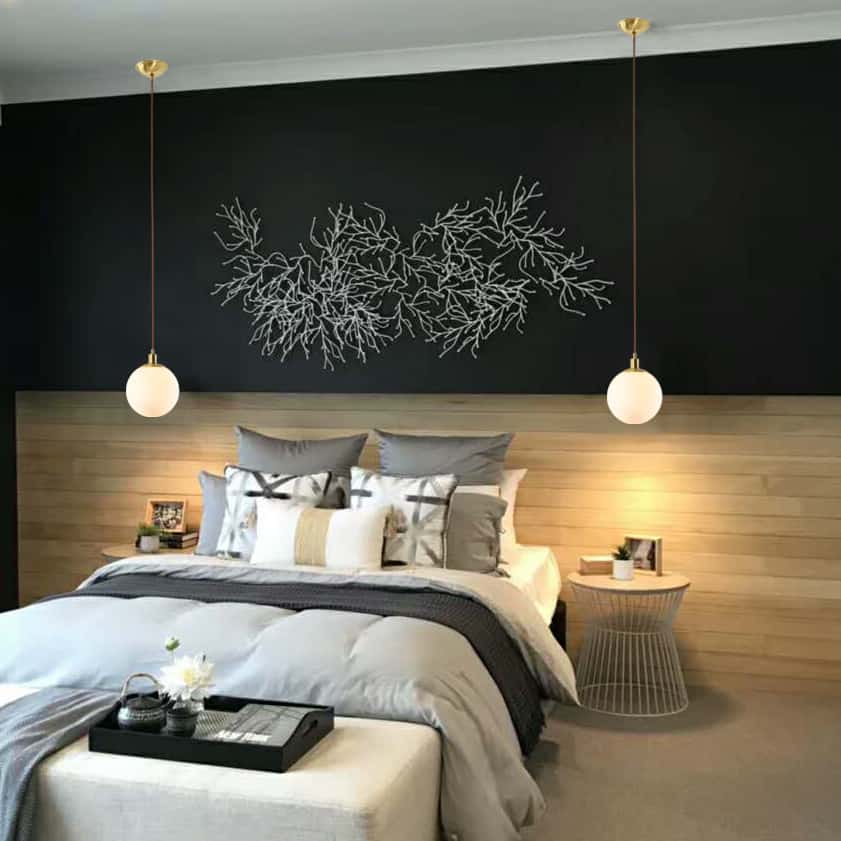 Shop this here: Gasuka Copper Round Globe Pendant Lamp
Shop this here: Gasuka Copper Round Globe Pendant Lamp
Accent Light
The fourth type of light which can put a certain element in your home in the spotlight is called accent lighting. This is why it is also often called highlighting. Whether it be a painting, a book shelf, a collection, or just a bare part of a wall, it can be enhanced through accent lighting.
From the word itself, there’s no question that accent lighting pretty much takes aesthetics in lighting to a higher level. Although it is not anymore the main source of light, it is still actually given utmost priority especially in a well-designed home. So the question now is, how can you get the most out of accent lighting?
Accent Lighting for Walls
Interior designers love playing with patterns and textures. It’s very common nowadays to see a newly renovated home with accent walls such as those with stone cladding, wallpapers or murals, fluted wood panels, limestone painted walls, and many more. These are called featured walls. To even draw more attention to these areas, accent lighting may then be used. In this case, track lights, recessed lights, cove lights, and spot lights are the popular choice.
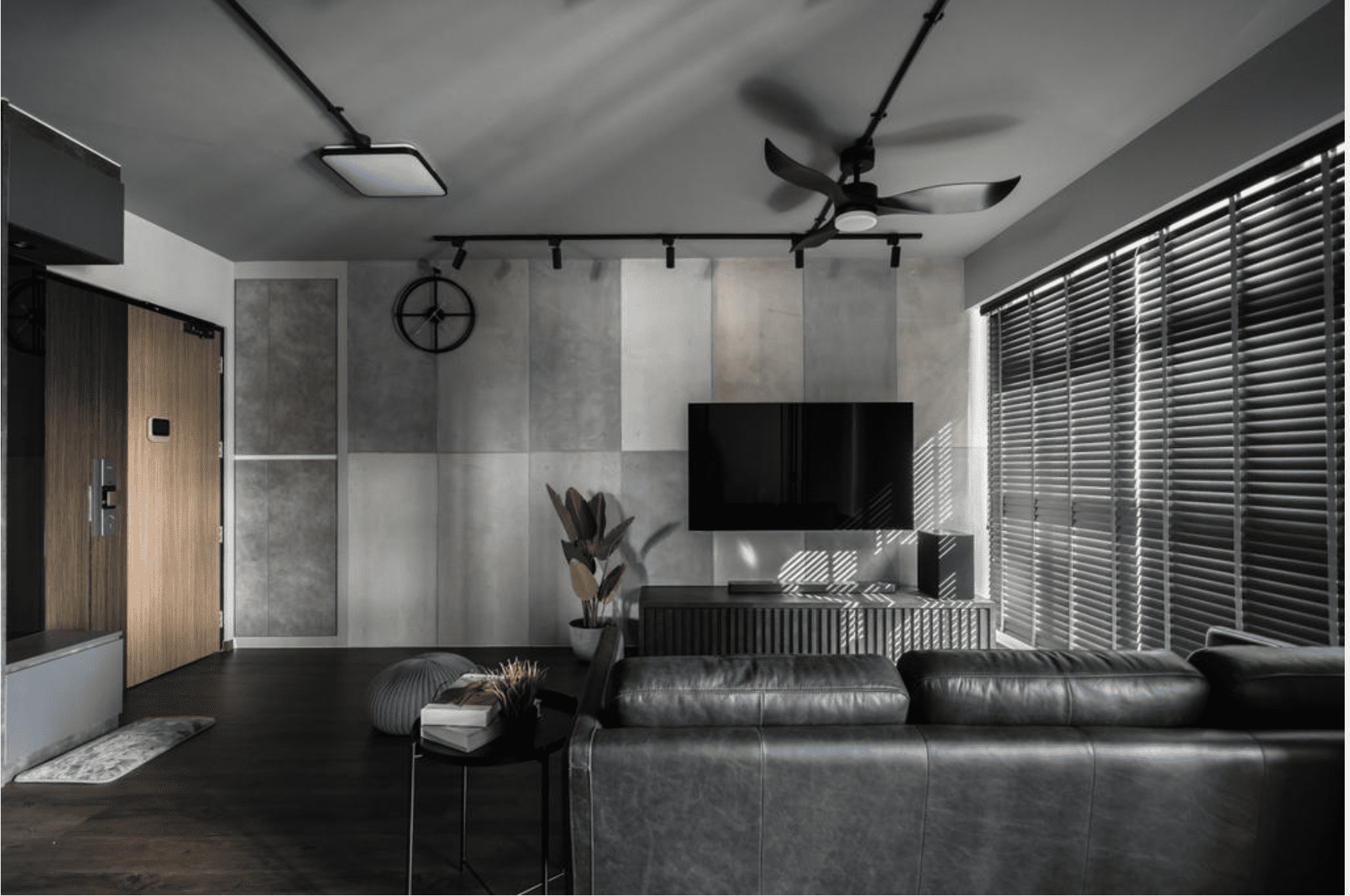 Image Credit: Interior Designer Zenith Arc, Qanvast
Image Credit: Interior Designer Zenith Arc, Qanvast
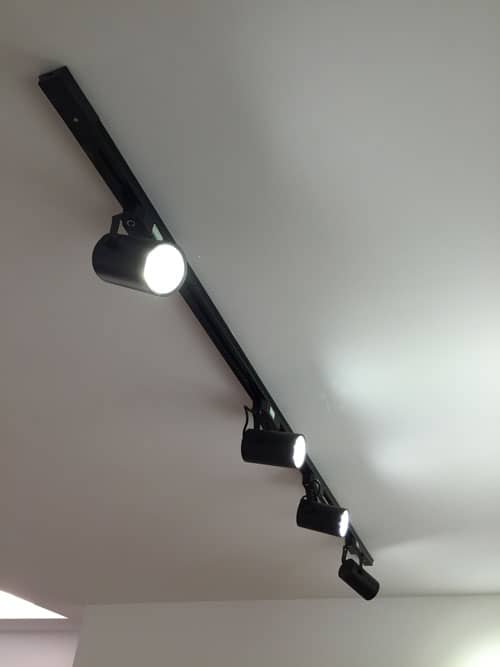 Get this here: LED Tracklight Spotlight Pack
Get this here: LED Tracklight Spotlight Pack
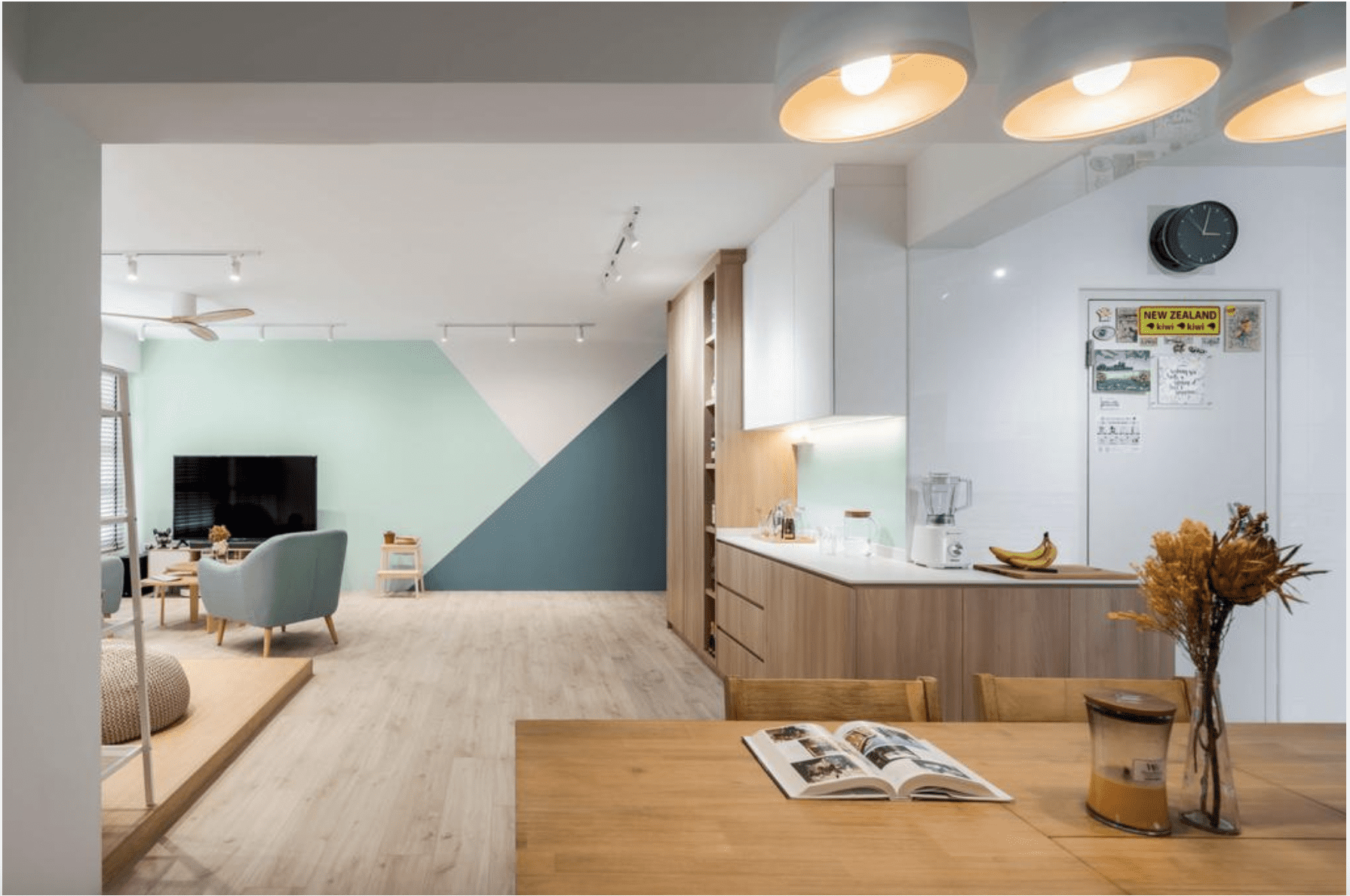 Image Credit: Key Concept, Qanvast
Image Credit: Key Concept, Qanvast
Accent Lighting for Niches
Niches are still constructed at this point in time, although rarely. With accent lighting, niches can become more visually appealing. With recessed lighting, the spot is able to draw more attention just as what a niche is supposed to do. Placing recessed lighting and lighting it when dark also creates an optical trick that the niche is deeper than it actually is.
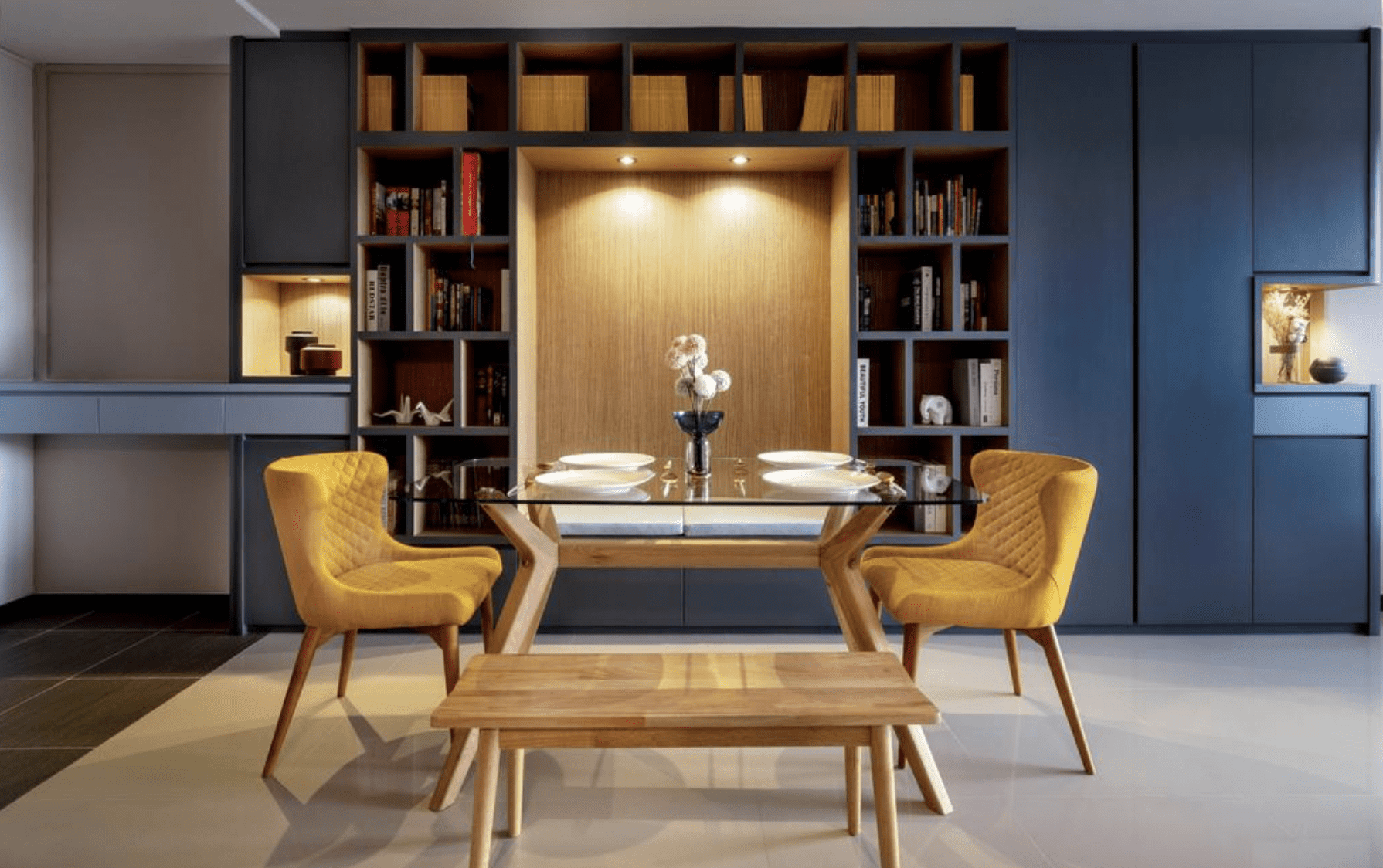 Image Credit: Qanvast, Starry Homestead
Image Credit: Qanvast, Starry Homestead
Accent Lighting for Cabinets
Kitchen cabinets are often enhanced by under cabinet lighting. This is a simple trick that can completely transform how a kitchen looks. The light reflecting through the backsplash and the counter without a doubt gives an amazing impact on the ambiance.
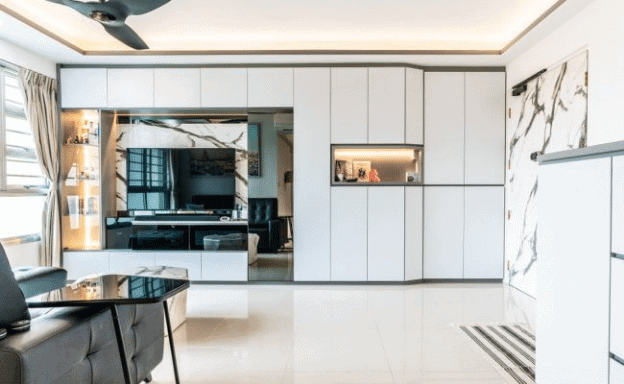 Image Credit: Renopedia, 96 Degree Designers
Image Credit: Renopedia, 96 Degree Designers
Even in the bathroom, the overall look of vanity cabinets can also be improved through accent lighting.
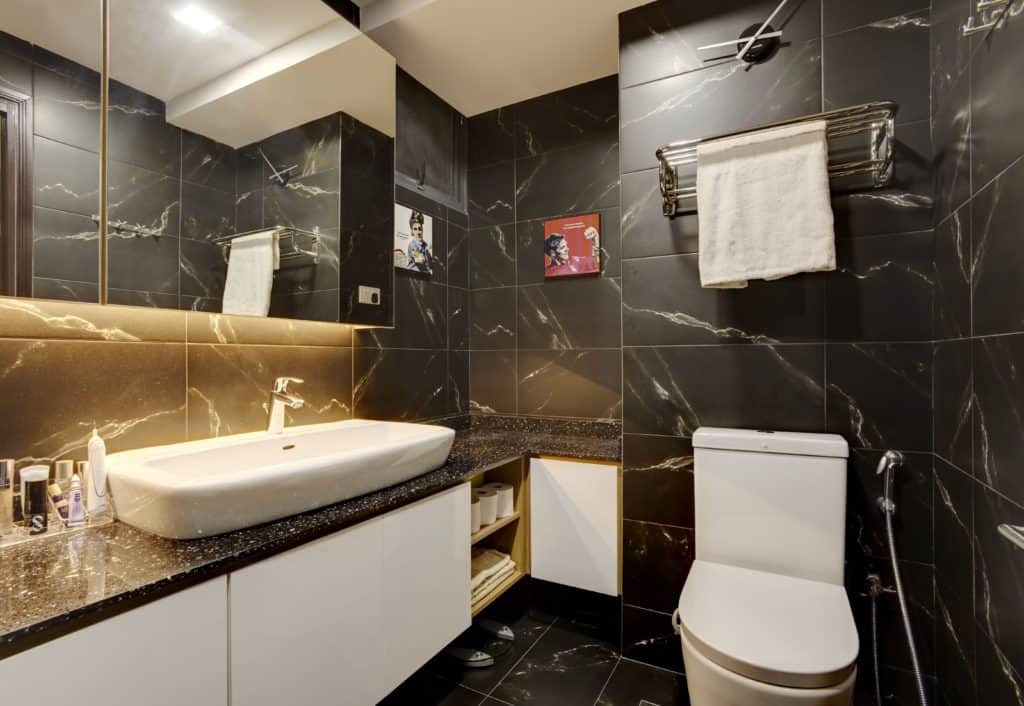 Image Credit: Renopedia, 3D Innovations
Image Credit: Renopedia, 3D Innovations
Accent Lighting for Collections
Having collections or prized possessions is common. And if it is important to you, you may want to display it in your home. With accent lighting, it can be further highlighted for your guests to see. For most, it is not about flaunting or boasting what you have, it’s actually the fact that it makes you happy when you see it often. This is true for collections such as die casts, robots, funko pops, watches, and even big items such as bikes!
To achieve this look, you may use LED T8 lights or strip lights. Either is okay but T8 lights are easier to maintain.
Aesthetic Lights
As the name implies, this type of lighting obviously focuses on aesthetics. So how is it different with accent lighting which also beautifies and highlights an area?
With aesthetic lighting, it is not only about lighting spaces, it is about the light itself that is expected to be stunning and appealing. It is also referred to by some interior designers as a marker as it is a landmark for a specific area or destination. Commonly used aesthetic lightings are cove ceilings with complex designs.
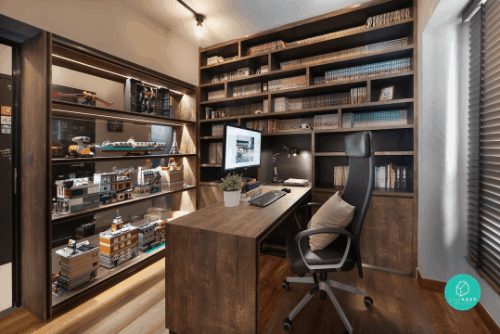 Image Credit: Renopedia, Luxespace Inteiror
Image Credit: Renopedia, Luxespace Inteiror
Fairy lights or string lights to some are also used as aesthetic lighting. Although often used on open spaces like gardens, terraces, and balconies, it has also been a practice for some to use it on the inside of their homes. If it doesn’t fit the theme of your interior but you really want to have it badly, you may use it when throwing birthday parties or celebrations at home.
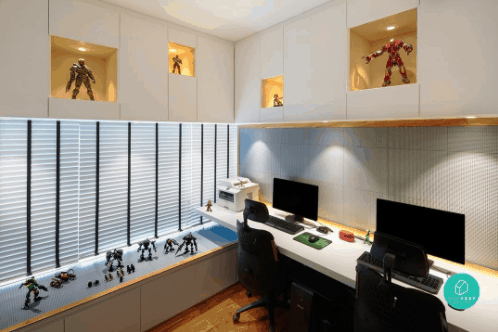 Image Credit: Qanvast, The Scientist
Image Credit: Qanvast, The Scientist
Now that you know these five types of lighting, you may now create a home with well-planned lighting. Always remember that you don’t have to use all of these as it may sometimes be too much, just make sure to mix and match well and always be consistent with the theme of your home. Good luck!
